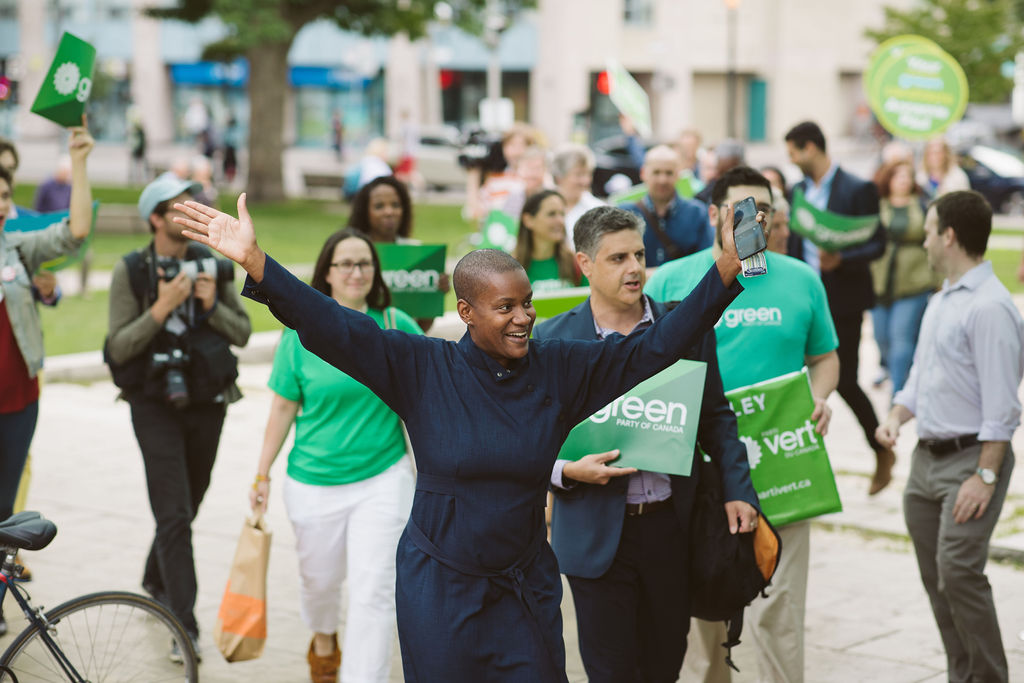The green journey starts with the Canadian federal election just around the corner on October 21st, the subject of Climate Change is being addressed from all sides of the political spectrum. This debate has got people thinking, not only about who to vote for, but for the future of our planet.
Toronto is one of the largest cities in Canada, but Toronto Centre itself, the epicentre of the city, is the smallest riding. It is a multi-cultural hub, making it one of the most unique urban centres in North America. Yet, it is also the most transient, with inhabitants consistently moving in and out of downtown. Needless to say, this is problematic for politicians attempting to analyze demographics and engage with prospective voters.
Despite this, there has been a groundswell of support for the Green Party in particular. What was once a fairly dormant riding, now has an active campaign team in this election, an impressive volunteer turn-out, and acknowledgment and support from Green Party of Canada Leader, Elizabeth May.
I decided to find out more, and seek an explanation for this dramatic shift. I first caught up with Matthew Casselman, former President of the Green Party of Ontario to get his perspective.
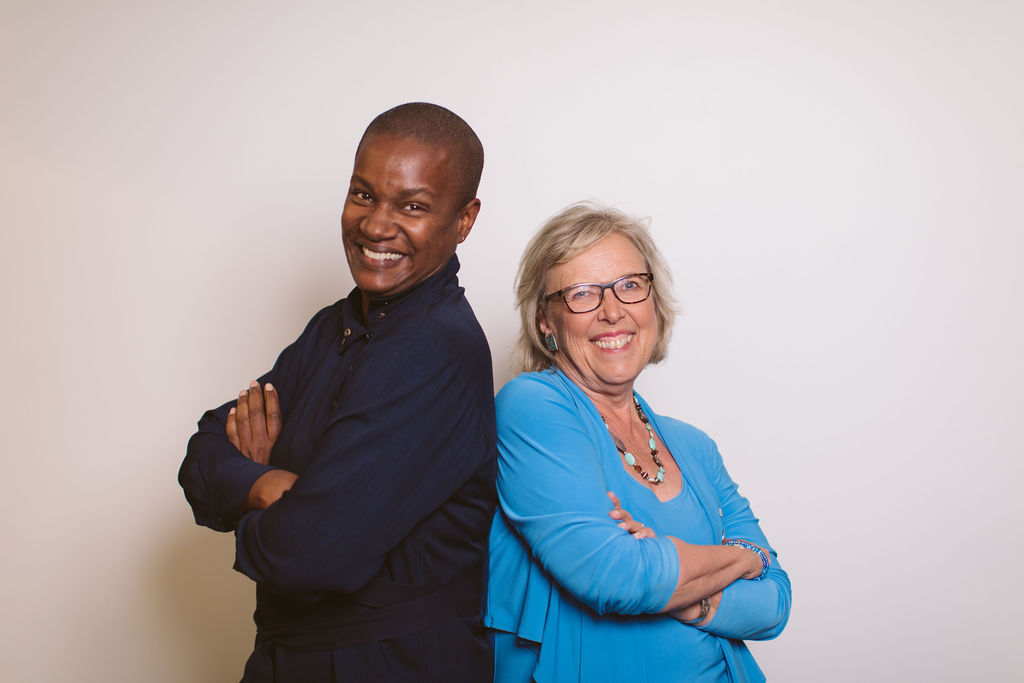
SH: In the greater Toronto area, the Greens have had glimmers of success in years past. How would you describe the Green movement historically in Toronto?
MC: In this election, it seems that there is more energy on the ground, strong candidates have been nominated, and a new sense of vibrancy and excitement is taking hold in areas that have recently seen a dearth in grassroots activity.
However historically, the Green Party has struggled to take root in the greater Toronto area. The most successful result occurred in the 2008 by-election, here in Toronto Centre, when Chris Tindal captured 13.4% of the vote.
We haven’t had very impressive results at the ballot box. There are some significant barriers to emerging as a political player in Canada’s largest city. It’s an expensive place to campaign and there seems to be more of a focus on Toronto based news media outlets on national discourse. Recent elections were also hard for ridings outside areas where the Green Party redirected resources to establish a footing in our legislature.
SH: You’ve been involved in Green politics for some time now. How would you account for the current state of interest in voters becoming Green from all walks of life and political affiliations?
MC: I think people are fed up with the traditional options available to them. Moreover, it seems that many voters were profoundly disappointed with how flagrantly the current Liberal government moved away from key policy commitments and from their commitment to doing politics differently. The concept of strategic voting loses luster when people are disenchanted with the system writ large. I see the Green Party as a vehicle for system disruption and an important emerging voice from a stale roster of tired choices.
SH: Why is civic engagement so important to both an election period and the years in between?
MC: Organizing a campaign takes a substantial amount of time, volunteer hours, and money. In Toronto Centre, the Liberal and NDP campaigns each spent nearly $200,000 in their efforts to win the riding. If you are aren’t engaging with voters and building an organization between elections, you are at a huge disadvantage.
People sometimes comment that they don’t see politicians until it’s time to vote. Civic engagement is important and more people should seek out opportunities to be active. However, political entities need to also do their part to regularly engage the electorate to demonstrate that there are opportunities to make a difference through political participation. In my experience, volunteers don’t stay involved if they think that their work isn’t making an impact.
***
The key to any successful movement is to bring together different communities who share a common goal. Darcy Higgins is the Founder of Building Roots, an organization that exists to bring healthy food to all neighbourhoods. Building Roots works collaboratively to create urban agriculture, kitchens, markets, retail and food hubs. Darcy is a long-time Green supporter and has fostered a vast network of communities in Toronto Centre, all of whom strongly believe in the ethos of living Green.

SH: Toronto Centre is a very diverse community, which presents its own challenges in bringing people together who share a common goal. You have been very successful in your work around promoting a Green-living philosophy. How would you describe your work in building community?
DH: The community I’ve lived and worked in for many years is incredible and an inspiring one. I’ve worked in every neighbourhood in this riding and they each have a lot to offer. Despite differences of all kinds, I really find that people often come together for common goals. I see this especially in people of all backgrounds embracing queer and transgender neighbours with respect. I find division is still common over race and class because of societal teachings and even how our neighborhoods were physically constructed. With people dying each day from poisoning by opioids, housing and climate crises, we need ways to create working ties across communities who have not traditionally worked together.
My work has always focused on bringing people together who’ve never met before, and tackling common objectives. Through the process of working on a project or issue, people gain skills, meet neighbors and find common purpose. Those who are isolated or unsure of their neighbors can visit a market, a picnic or a kids festival and leave with a smile, and a seed of something bigger for their community.
In Building Roots we’ve seen that with one success can come the next, buy-in and then resources to bring further change. The climate emergency will require communities to rely on the bonds that these smaller projects create. After cohesion has been created and people have shared their skills, neighbors can work together to plan and respond to each issue that arises, whether it be taking care of those most in need, in a heatwave or a flooded building.
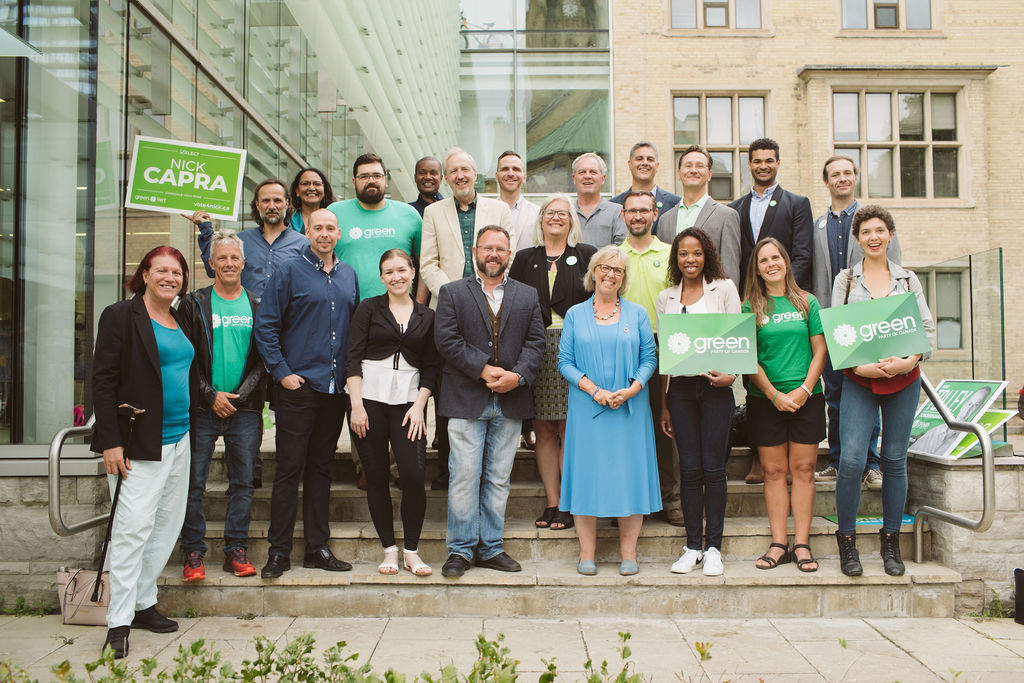
SH: You have been a part of the Green political movement for quite some time. How do you see its evolution in the Toronto Centre community to the present day?
DH: I joined 15 years ago when I started worrying about pollution in my community. The local advocates who cared about this were also the Greens. Since then I’ve worked on local, provincial and federal politics. I’ve always got to collaborate with kind and smart people who care about their communities, so it’s really been a gift.
Establishment politics has reigned for a long time in this community, but people want something better. They see homelessness growing on every corner under the status quo governments. Young people, in particular, are not ready to give up on the planet. Greens are attracting highly active and skilled candidates and volunteers like I’ve never seen before. The growth has been particularly fast over the last year. We know we’re in an emergency, and in an emergency, you get to where you need to be.
***
Finally, I wanted to talk to the current Toronto Centre Green Candidate Annamie Paul. Her passion and drive is in large part responsible for the shift in public opinion and civic engagement toward a Green way of thinking.
SH: Toronto Centre is one of the smallest ridings in Canada. Yet, it’s also one of the most diverse in terms of cultural backgrounds. Given this, how do you plan to get the Green message out there to all inhabitants of your riding?
AP: Toronto Centre is wonderfully diverse, with many newcomers, long-time residents and a myriad of languages spoken. Getting the Green message out to the community means making sure that the diversity of the riding is reflected in our team. Our volunteers come from all sorts of backgrounds and life experiences which means they can connect with community residents.
We are also making sure that we meet our residents in the places where they congregate. This includes local markets, community events, meeting directly with neighbourhood associations and community organisations that are doing the important day-to-day work in Toronto Centre.
SH: You recently hosted a Forum on the Climate Emergency in Toronto Centre in which you invited Green Party Leader of Canada, Elizabeth May. This event attracted hundreds of people, as well as garnering impressive press coverage. For a riding that has been fairly quiet in recent years on Green issues, how do you account for this massive show of support?
AP: There is clearly a large appetite for information on the Climate Emergency in the community. Toronto Centre residents, and Torontonians in general, want to educate themselves about the Climate challenge we are facing and they want to be part of the solution. In fact, the Climate Emergency is a top election issue for Canadians, so we were very lucky to have the opportunity to have Elizabeth May come speak. Elizabeth is one of the most knowledgeable Canadians on the science and policies related to the Climate Emergency. It has been a while since Torontonians have had a chance to hear her speak in-depth and so I think they didn’t want to miss it!
The Green Party has been able to attract incredibly talented and committed volunteers for this election and I credit them for the great turnout and the quality of the event itself. Our team had just about a week to produce the Forum and they were able to mobilise Greens all across the city and make sure that this was a true Toronto-wide Green event.
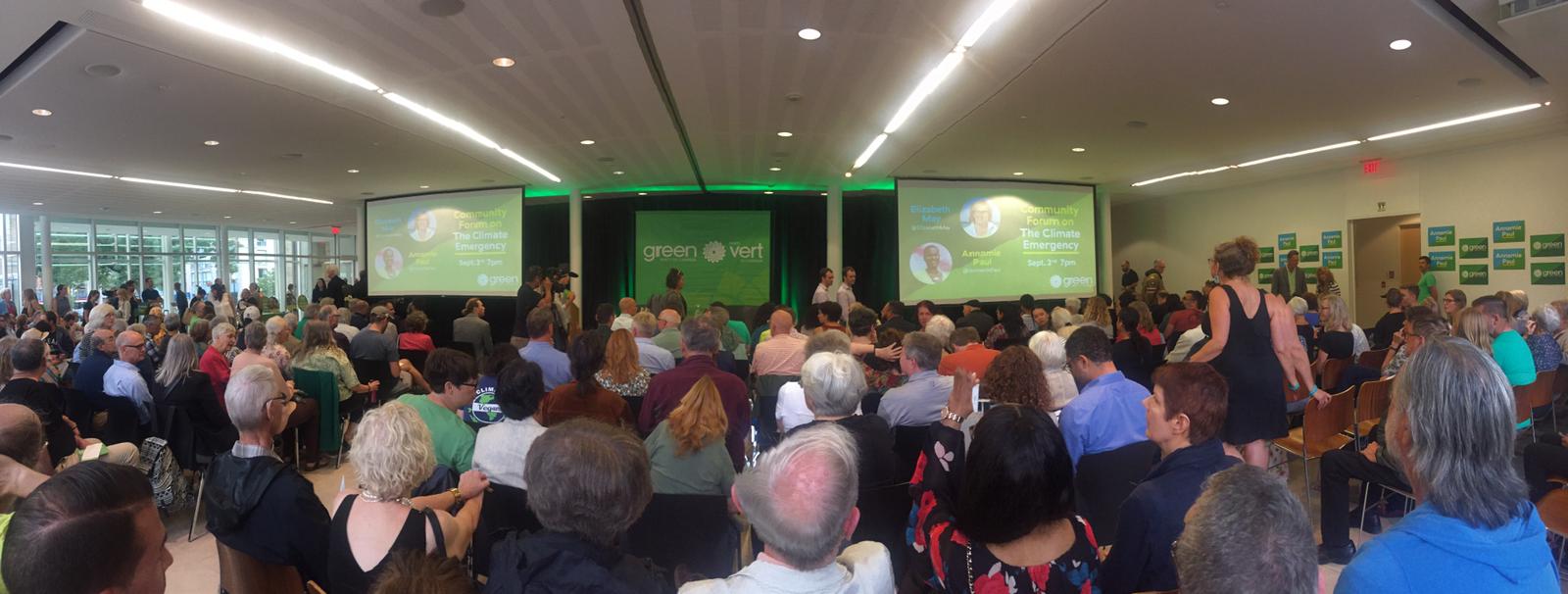
SH: In a campaign such as this, how do you balance the needs of the federal party with that of the local riding?
AP: I was recently appointed as the International Affairs Critic in the Green Party Shadow Cabinet. This means that I am often called on to comment on foreign affairs issues as they arise. The Shadow Cabinet also operates as a sort of Brain Trust and sounding board for each other and our leader. There is no doubt that this absorbs a fair amount of time, but I am privileged to be a part of the Cabinet and to represent Toronto Centre in this role.
During the election period though, my first priority is to the campaign and working to be elected as a Green Party Member of Parliament. The day-to-day work is being out in the community canvassing and meeting with voters. In short, balancing the needs of the federal and local campaigns means a lot of long days!
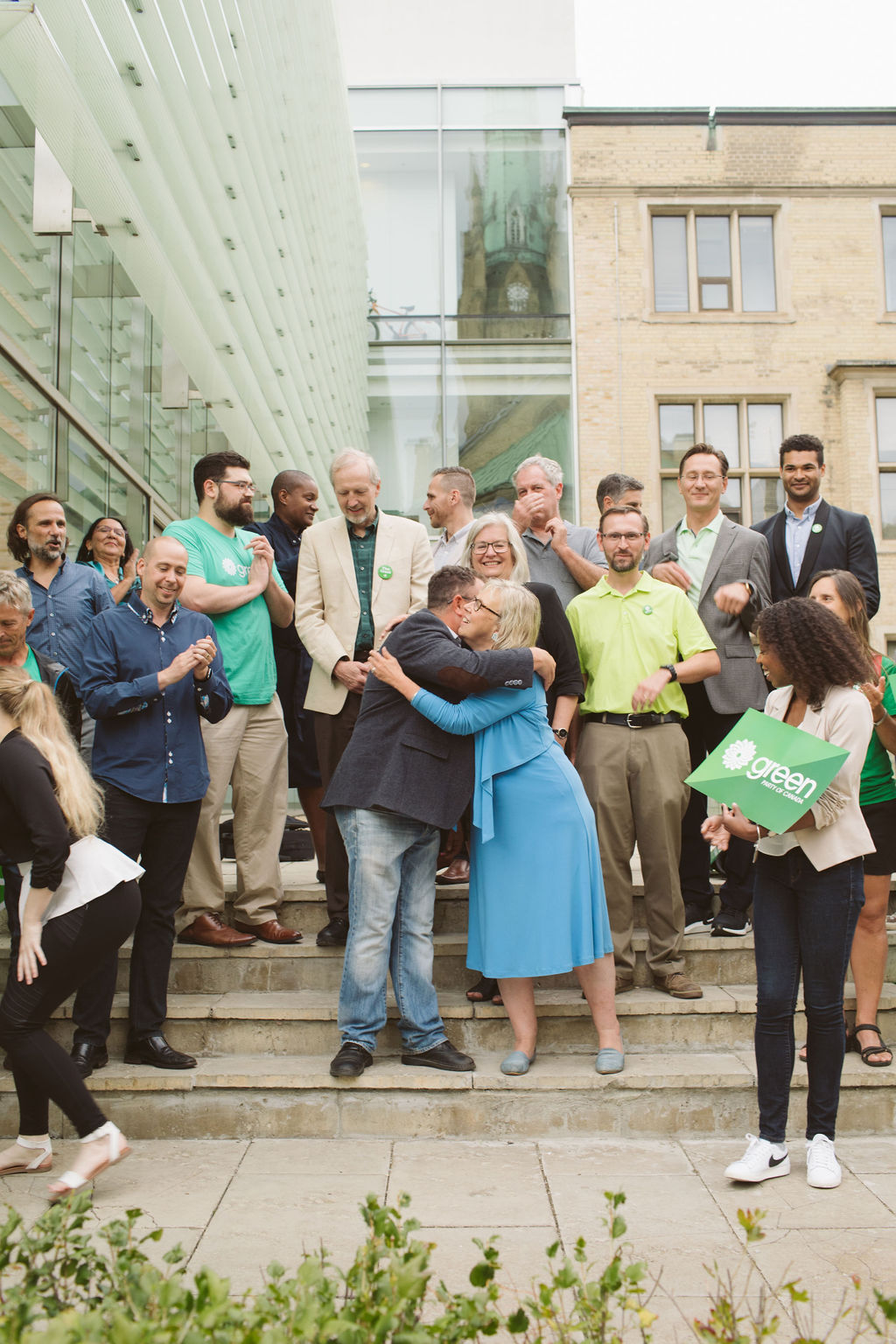
SH: If elected, you will represent an important riding in Canada – one that may be responsible for turning the tides toward Green support across the country in the coming years. How will you make your mark in parliament in the nation’s capital?
AP: The most important job and statement that I can make as a new parliamentarian will be to represent the concerns and issues that matter to my constituents first and foremost. There has been increasing drift away from this core mandate over the years in parliament and it would be a powerful statement to reassert the importance of this function. We are fortunate within the Green Party to be able to always prioritize our ridings; we call this putting “people before party”.
SH: You are extremely passionate and dedicated to winning the riding of Toronto Centre. Where does this drive come from?
AP: I was born in old Toronto Centre and my bonds of family and friendship run deep in the riding. My mother taught for years at a variety of primary schools here and my grandmother worked as a nurse’s aide in Toronto Centre hospitals. Over the years, I have studied at George Brown College and Ryerson University and began my professional career in Toronto Centre, so the area means a lot to me.
Toronto Centre has many challenges that it is tackling, including community safety, affordability, and a healthy city. Effective and sustainable responses to these issues will require every level of government to get behind it and a Member of Parliament that will fight to see it implemented. This is what the residents of Toronto Centre deserve and I am determined to do my best to serve the community.
***
If the Greens were to win a riding such as Toronto Centre on October 21st, it could mark a significant shift in the balance of power across the country. Although the smallest riding, Toronto Centre packs a powerful punch when it comes to public opinion. Yet, regardless of the outcome, great strides are being made and the Canadian populous is beginning to realize we are in a climate crisis and changes need to be made on how we govern and live our lives.
If you’d like to find out more about Annamie Paul, you can check out this podcast interview on Democracy365: A Green Podcast.


